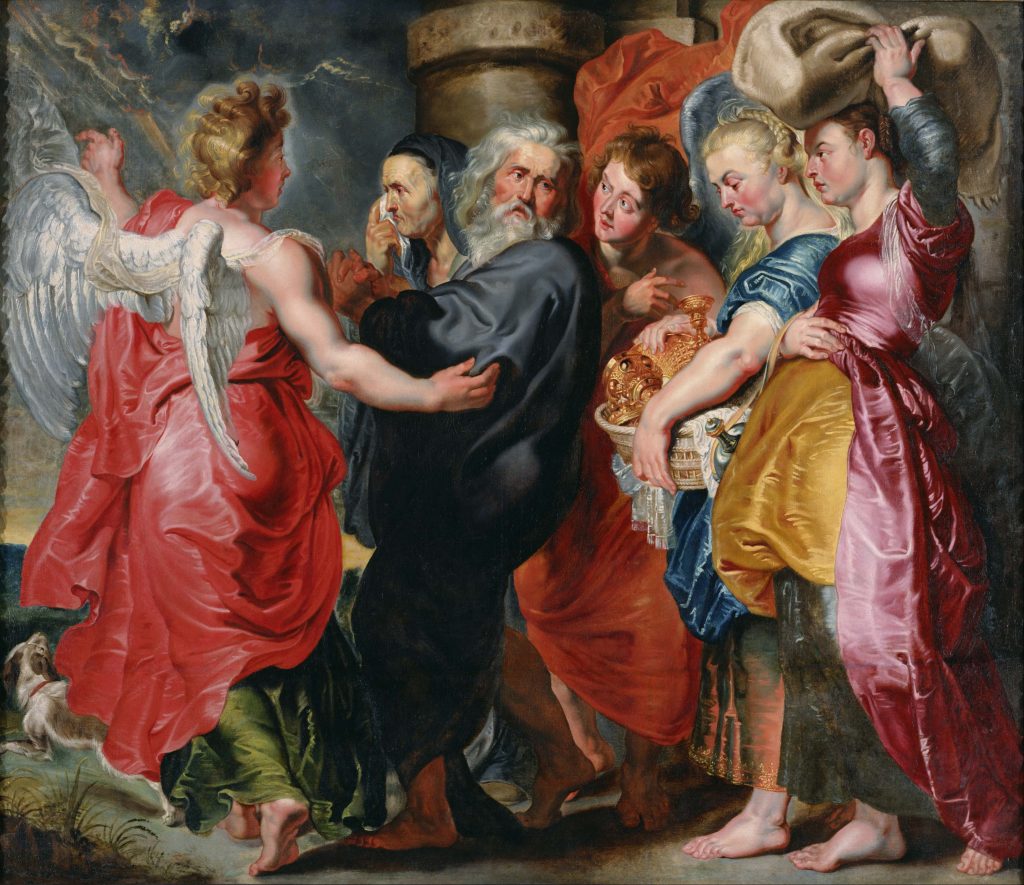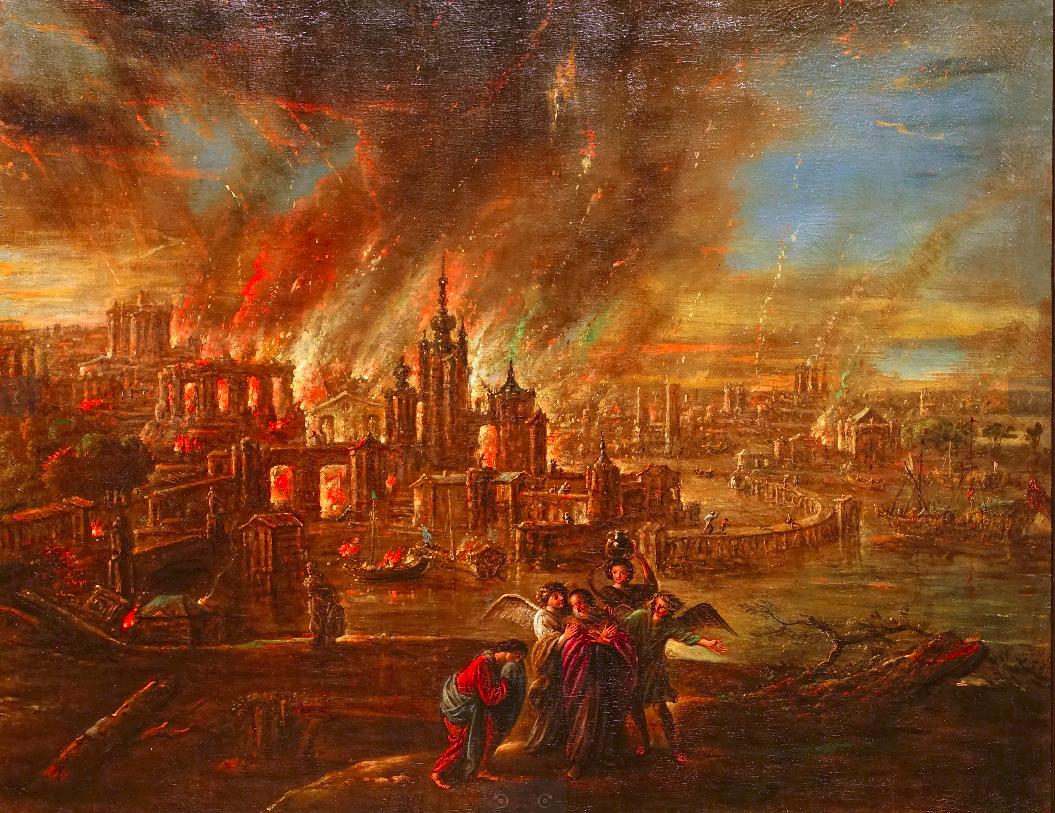The story of the ancient cities of Sodom and Gomorrah is found in the Hebrew Bible and the Christian Old Testament. According to the story, these two cities were located in the region of the Jordan River Valley, near the Dead Sea. The cities were known for their wickedness and sinfulness, and they were ultimately destroyed by God as punishment.
According to the book of Genesis, these cities were known for their great wealth and prosperity.
However, despite their wealth, the people of Sodom and Gomorrah were said to be wicked and evil, engaging in all sorts of sinful behavior, some of which were adultery, theft, and violence.
When God became fed up with this evil behavior, he decided to mete out his punishment and destroy the cities with fire and brimstone, killing everyone who lived there, but not before testing them first.
The destruction of Sodom and Gomorrah
God created man in his image to reflect himself at the time of creation. Sadly, man at some point deviated from what he was created to be. In the case of Sodom and Gomorrah, people became inhumane, extremely selfish, and immoral.
God was said to have sent two angels to the cities to investigate the claims of wickedness going on there and to determine whether or not the cities deserved to be destroyed. Upon arriving in the cities, the angels were met with hostility and violence from the people, who attempted to attack and rape them.
The angels arrived in Sodom and were welcomed by Lot, who invited them to stay with him. Lot was described as “a righteous man who was distressed by the wickedness he saw around him.” That night, however, the men of the city surrounded Lot’s house and demanded that he turn the angels over to them so that they could “know” them (a phrase that is often interpreted to mean that they wanted to have sexual relations with the angels). This is the first account of homosexuality as a thing. Lot refused to do so and offered the men his daughters instead, but the men rejected the offer and continued to try to force their way into the house.
In the end, the angels protected Lot and his family and led them out of the city before God destroyed it with fire and brimstone. Lot’s wife, however, looked back at the city as they fled and was turned into a pillar of salt as a result. After some time, Lot and his daughters moved into a cave and lived there before leaving and returning to the outside world.
Throughout the story, Lot is depicted as a righteous man who is deeply troubled by the wickedness of the cities of Sodom and Gomorrah.

Despite this great virtue, he seemed to be somewhat weak and indecisive, as he was willing to offer his daughters to the city’s men in order to protect the angels.
Where were Sodom and Gomorrah located?
The exact location of these cities is not known with certainty, as there is no definitive archaeological evidence of their existence; however, the story of Sodom and Gomorrah is set in the ancient Near East, a region that encompasses parts of modern-day Israel, Palestine, Jordan, Lebanon, and Syria.
According to the biblical narrative, the cities were located in what is now the southern part of Jordan, near the Dead Sea, an inland sea located in the Jordan Rift Valley in western Asia.). In ancient times, this region was home to a number of cultures and civilizations, including the Babylonians, Persians, and Greeks. They were the definition of cosmopolitan cities.
Some scholars believe that they may have been located in the area of modern-day Jordan or Palestine, while others have suggested that they were in the region of the Dead Sea in modern-day Israel.
Lessons from Sodom and Gomorrah
The story of Sodom and Gomorrah has been interpreted in many different ways over the years, and different readers have taken different lessons from the story.
Some common themes that have been identified include:
- The importance of justice: In the story, the cities of Sodom and Gomorrah are described as being wicked and sinful, and their destruction is often seen as a punishment for their wrongdoing. This suggests that justice is an important value in the eyes of God, and that those who do wrong will be held accountable for their actions. It’s just a matter of time, especially if they don’t seek his mercy.
- The importance of mercy and compassion: Despite the wickedness of the cities, the story also demonstrates the importance of showing mercy and compassion to others. In the story, God sends two angels to Sodom in the form of travelers, and a man named Lot offers them shelter and protection from the violent mobs that seek to harm them. This act of kindness ultimately leads to Lot and his family being spared from the destruction of the city. Kindness and good deeds never go unrewarded, no matter how long it takes.
- The dangers of pride, greed, and selfishness: The story also serves as a warning against the dangers of pride, greed, and selfishness. It is often said that “pride goes before a fall.” These negative traits are often associated with the cities of Sodom and Gomorrah, and they are seen as contributing to the cities’ downfall.
Conclusion
Some people believe that the cities were destroyed because of their lack of hospitality, selfishness, and mistreatment of strangers, while others see the destruction as a punishment for the people’s sins and wickedness. Despite the many different interpretations of the story of Sodom and Gomorrah and the reasons behind their destruction, their story serves as a cautionary tale about the consequences of living a barbarous, sinful, and wicked life. Hence, it is always better to be on the right path and avoid sin and wickedness.
Their story teaches important lessons about justice, mercy, compassion, and the dangers of pride, greed, and selfishness. While the story is set in the ancient Near East, its themes and lessons are timeless and relevant to people of all ages. By considering these lessons and striving to live by them, we can work towards creating a more just and compassionate world.
Featured Image: Daderot, Public domain, via Wikimedia Commons




